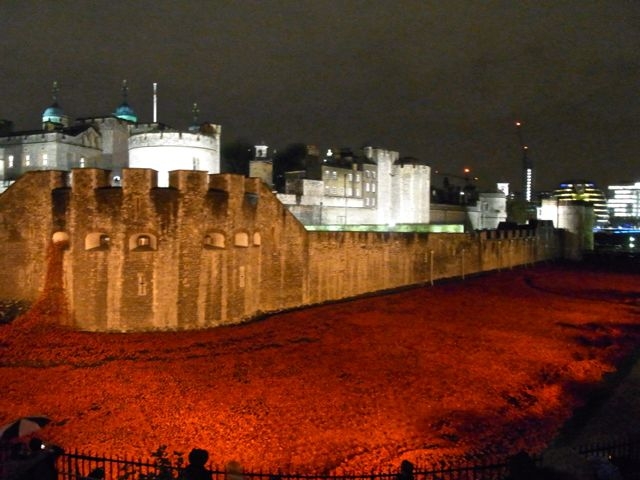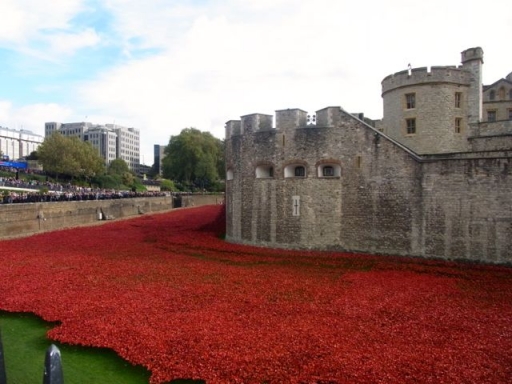Britain’s Prime Minister, David Cameron, has announced that some of the ceramic poppies at the Tower of London will be kept on view until the end of November 2014, before starting a First World War Centenary tour of the UK.
The poppies, remembering soldiers from Britain and its colonies who were killed during the war, have attracted millions of visitors since the project was unveiled at the start of the Centenary commemorations in August 2014.
Culture Secretary Sajid Javad, who leads the British Government’s programme, said: “Like the four million or so people who have gone to see them, I was left in awe at the sheer scale and strength of the piece. For me this is public art at its most powerful and moving.”
The length of the queues has at times prompted appeals for people to delay visiting the poppies until a quieter moment.
In recent days, the leaders of Britain’s main political parties, together with the Mayor of London, Boris Johnson, have united in calling for the display to be extended.
 The poppies by night
The poppies by night
Prime Minister David Cameron has announced that two of the installation’s most striking features will now be retained for permanent exhibition.
The ‘Weeping Window,’ a cascade of poppies from a window overlooking the moat, and ‘The Wave,’ a wall of poppies rising over the entrance, will stay at the Tower of London for the rest of November.
They will then be exhibited in towns and cities around the UK until the end of the Centenary in 2018, when they will given to the nation for display at the Imperial War Museum’s sites in London and Manchester.
Mr Cameron, who visited the poppies on November 8th 2014, the eve of Remembrance Sunday, said: “The poppy display at the Tower of London has in a very short space of time become a much loved and respected monument.
“We want to ensure that as many people as possible have the opportunity to witness it, and the government is providing money and working with charities to do so.
“By displaying parts of the installation around the country and then permanently in the Imperial War Museum, we have ensured that this poignant memorial will be saved for the nation.”
The Government is providing more than £500,000 to help cover the cost of the touring exhibition, using money from misconduct fines imposed on the banks.
The last of the 888,246 poppies, each representing a British or colonial fatality of the First World War, will be planted on Armistice Day, November 11th.
Volunteers will then starting removing them for dispatch to people have bought them in aid of six service charities.
The installation, entitled ‘Blood Swept Lands and Seas of Red,’ was designed by artist Paul Cummins, with setting by stage designer Tom Piper.
Source: UK Government
Images: Peter Alhadeff, Centenary News
Posted by: Peter Alhadeff, Centenary News
